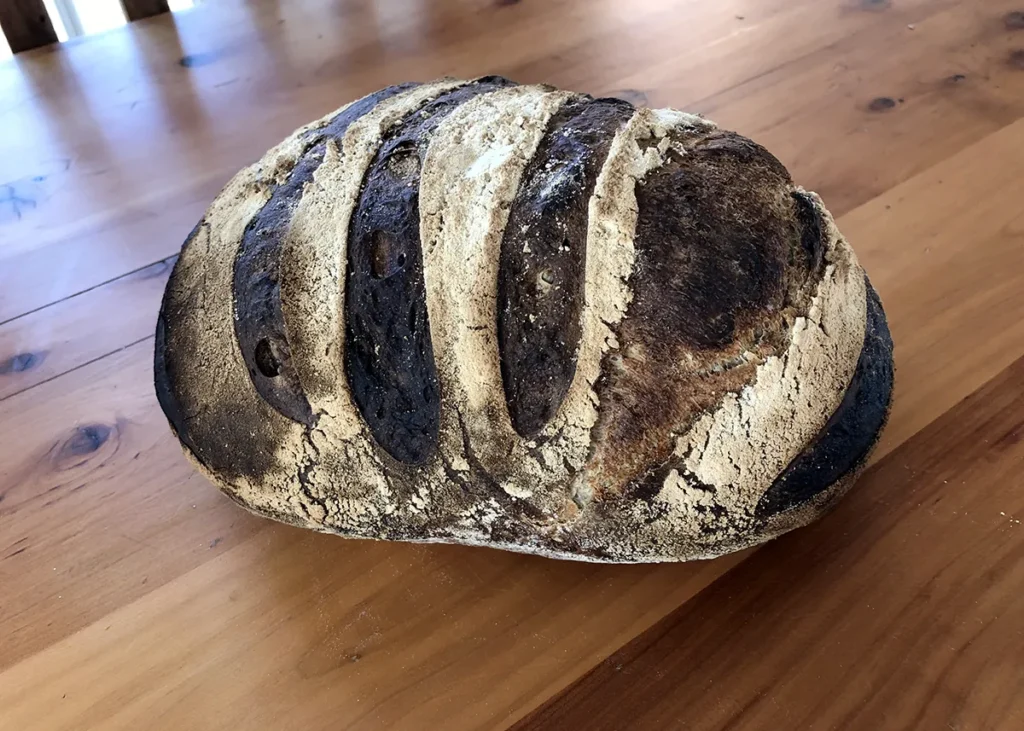
Is Sourdough Bread Baking More Science Or Art
- Sourdough Baking
-
Apr 25
- Share post

The Delicate Dance of Sourdough Baking:
Bread Baking as Both Science and Art
In the world of culinary crafts, few activities blend the rigorous demands of science with the expressive grace of art as entirely as sourdough bread baking. Anyone who has witnessed the chemical transformation of flour, water, salt and starter into a crusty loaf knows this dance well.
There’s no better start to a spring morning than the aroma of freshly baked bread, especially when it’s paired with a hot cup of coffee and a slice kissed with just a touch of butter—made by none other than you!
The process begins with exactness, a hallmark of science. Each ingredient in sourdough bread baking plays a crucial role: the flour, often robust with gluten, provides the scaffold; water starts the chemical reactions; sourdough mother, a living organism, ferments and releases gases, causing the dough to rise; and salt regulates this yeast activity. The proportions and temperatures are measured with the precision of a lab experiment. Deviations can lead to drastically different outcomes, a fact known well to novice and expert bakers alike. The consistency of humidity and temperature in proving the dough could confuse a bread recipe as easily as any variable in a scientific experiment.
Yet, I urge you to embrace the culinary gamble, for in the alchemy of starter culture, flour, water and salt, as in life, each misstep is a whisper of possibility, a secret nudge towards the mastery of your baker’s craft.
Yet, once the baker’s basic equation is set and the initial conditions met, the artistry begins. It is in the handling of the dough, the nuanced adjustments made by the feel of its texture and the observation of its rise. The artisan’s touch shapes not just the loaf but the very crumb and crust of it. Each scoring of the dough before it enters the oven is as much a signature as it is functional, allowing the bread to expand during baking and creating patterns as unique as brush strokes on a canvas.
Consider the sourdough, a loaf as much cultured as it is cultured. The starter—a mixture of flour, water, and wild yeasts from the air—is a living community, evolving and imparting complex flavours. The baker must nurture this culture, learning its rhythms and moods, an intimate dance akin to tending a bonsai or crafting a fine wine. Here, intuition and experience guide the baker more than any written formula.
Bread, in all its forms, from the fluffy tenderness of a brioche to the hearty, dense crumb of a rye pumpernickel, is a testament to this dual nature. The variations are endless, influenced by local customs, available ingredients, and historical traditions. Bread links us to our past and the geographical and cultural landscapes from which we come. It is a universal language of hospitality and sustenance.
Whether bread baking is an art, or a science seems almost moot. Like the finest arts, it requires rigorous discipline, knowledge and experimentation. Like the purest sciences, it demands creativity, intuition and failure. The successful baker embraces both, knowing when to measure and when to lead with the heart.
In exploring the duality of bread baking, we uncover a larger truth about human ingenuity: our most fabulous creations often arise from the union of structured thought and unbound imagination. Enjoy the process and embrace failure to help you develop as a sourdough baker. To bake bread is to participate in one of humanity’s oldest and most fundamental acts of creation, balancing the scales of art, nutrition and science in every loaf.